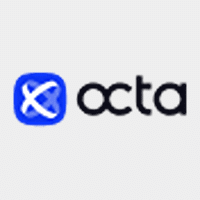June 2025 saw continued volatility in FX markets, with the US dollar weakening against most other major currencies (barring the JPY) amid uncertain US trade policy and heightened geopolitical concerns.
President Trump’s “Liberation Day” tariffs were temporarily reinstated at the end of May, whilst a dramatic flare-up in tensions between Israel and Iran created significant market uncertainty. However, sentiment has been more positive in the last week after the announcement of a ceasefire. The improved sentiment was further helped by news of a trade agreement between the US and China.
Here’s what to watch in July:
- US Trade Policy and the July 9 Deadline: The battle over the Liberation Day tariffs continues, with the July 9 deadline for “reciprocal tariffs” looming. This date could bring renewed trade tensions if new deals are not struck or if extensions are not granted. US President Trump recently stated that he doesn’t expect to extend the deadline.
- Federal Reserve: Following its June meeting, where rates were held steady, the Federal Reserve’s July 30-31 meeting will be closely watched. Trump has been urging the Fed to cut rates, heavily criticising Chair Powell.
- Bank of England Monetary Policy: The BoE’s decision to hold rates in June, amid concerns about sticky inflation (including a rise in food inflation), suggests a more cautious approach to further easing. July will bring more data that could influence their next move.
- Geopolitical Concerns: While an Iran-Israel ceasefire is in place, underlying geopolitical tensions remain. Any renewed flare-ups or developments could quickly reverse risk sentiment and drive demand for safe-haven currencies.
US Dollar (USD)
The US dollar’s path continues to be shaped by the ongoing narrative surrounding President Trump’s trade policies and geopolitical events. The US economy contracted faster than previously thought in the first quarter, while consumer confidence declined. The patchy economic performance, alongside the potential for renewed fiscal drama with the “One Big Beautiful Bill” targeting a July 4th Senate vote, reinforces concerns about the dollar’s stability.
The policy environment is continuing to deteriorate long-term confidence in the dollar’s stability and its traditional safe-haven status.
According to UOB analysts, the EUR/USD is expected to consolidate in a range of 1.1660 to 1.1730, while for the GBP/USD, the “next technical objective is 1.38.
Key Levels
- EUR/USD: Higher – 1.1920, Lower – 1.1660
- GBP/USD: Higher – 1.3980, Lower – 1.3430
- USD/JPY: Higher – 148.60, Lower – 139.90
Euro (EUR)
The euro’s performance in June was influenced by the European Central Bank’s (ECB) monetary policy decisions and ongoing trade and geopolitical uncertainties. As widely expected, the ECB cut its deposit rate by 25 basis points on June 5, extending its easing cycle. However, they hinted at a pause.
It was recently reported that the US and EU are confident they will reach a tariff deal ahead of the upcoming deadline. However, until that time, the risk remains.
According to analysts at UOB, “further EUR strength seems likely” against the US dollar. However, they note that “overbought short-term conditions could slow the pace of any further advance,” with the next key level to watch at 1.1780.
Key Levels
- EUR/USD: Higher – 1.1920, Lower – 1.1660
- EUR/GBP: Higher – 0.8620, Lower – 0.8450
British Pound (GBP)
The British pound has continued to demonstrate notable resilience, rising against the USD, as the Bank of England (BoE) maintained interest rates in June. However, they did hint at cuts as they see a weakening jobs market. UK inflation edged slightly lower in May, although it is still above March levels, and food inflation rose.
While UOB analysts believe there is scope for a pullback in the GBP/USD in the medium-term (one to three months), they think that over the next few weeks, the “outlook remains positive,” with 1.38 highlighted as the next key level higher.
Key Levels
- GBP/USD: Higher – 1.3980, Lower – 1.3430
- EUR/GBP: Higher – 0.8620, Lower – 0.8450
Japanese Yen (JPY)
The Japanese yen’s performance in June was somewhat mixed, mainly when assessing the USD/JPY. Early in the month, it edged higher. However, in the last week or so (as of June 29), it has started to strengthen. Domestically, the Bank of Japan (BOJ) maintained its short-term interest rate at 0.5% on June 17th.
Market participants are now keenly focused on the BOJ’s July 31 meeting for more concrete signals regarding the timing of the next interest rate increase. Whilst underlying inflation pressures are expected to support future hikes, the BOJ’s cautious stance suggests the yen’s path may continue to be uncertain.
UOB analysts believe the USD/JPY pair may have moved into a range trading phase and “it is likely to trade between 143.50 and 146.50 for the time being.”
Key Levels
- USD/JPY: Higher – 148.60, Lower – 139.90
- EUR/JPY: Higher – 171.60, Lower – 165.00
People Also Read:
Trade EURUSD with our top brokers
| Broker | Features | Regulator | Platforms | Next Step | |
|---|---|---|---|---|---|
 Your capital is at risk
Founded: 2014 Your capital is at risk
Founded: 2014 |
|
FSPR | MT4 | ||
 Your capital is at risk
Founded: 2006 Your capital is at risk
Founded: 2006Europe* CFDs ar... |
|
ASIC, FSA, FSB, MiFID | MetaTrader4, Sirix, AvaOptions, AvaTrader, Mirror Trader | ||
 Between 74-89% of CFD traders lose
Founded: 2010 Between 74-89% of CFD traders lose
Founded: 2010Between 74-89 % of retail investor accounts lose money when trading CFDs |
|
ASIC, FCA | MetaTrader 4, MetaTrader 5, cTrader | ||
 Your capital is at risk
Founded: 2009, 2015, 2017 Your capital is at risk
Founded: 2009, 2015, 2017 |
|
ASIC, CySEC, IFSC | MT4 Terminal, MT4 for Mac, Web Trader, iPhone/iPad Trader, Droid Trader, Mobile Trader, MT5 | ||
 Your capital is at risk
Founded: 2006 Your capital is at risk
Founded: 2006 |
|
CySEC, DFSA, FCA, FSB, SIA | MetaTrader4, MetaTrader5, cTrader, FxPro Edge (Beta) | ||
 Your capital is at risk
Founded: 2011 Your capital is at risk
Founded: 2011 |
|
CySEC, FSC, FSCA, MISA | MT4, MT5, OctaTrader | ||
